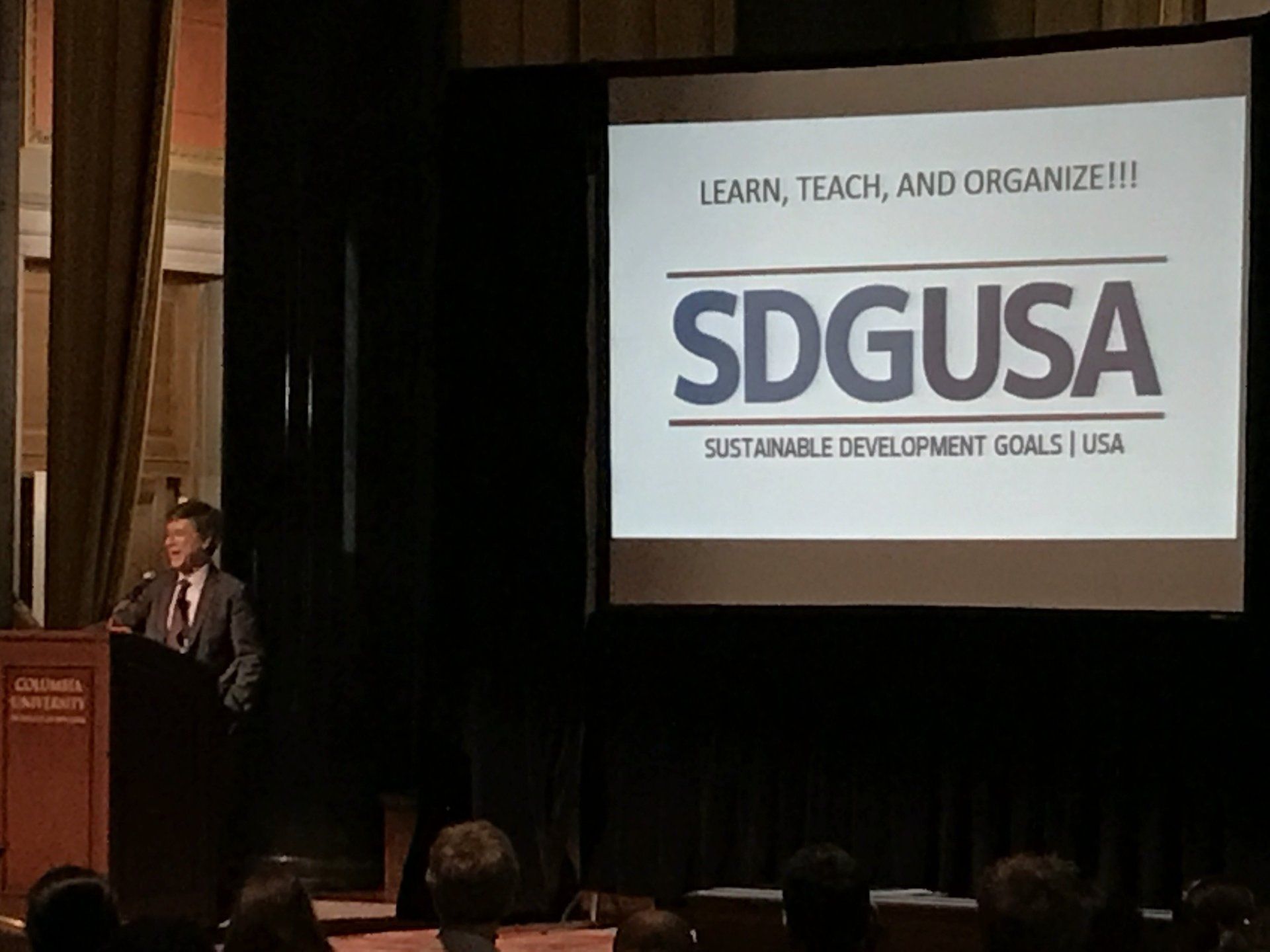SDGs Implementation in the USA: A Strategic Vision
News: October 9, 2017
US Agenda 2030
Sustainable Development Goals in the USA
Los Angeles—
SDG USA has released its strategic vision for the United States, supported by the Blue Chip Foundation and a number of other organizations. Called America’s Goals for 2030, SDG USA’s strategic vision is designed to support citizens, businesses, policymakers, universities and politicians in meeting goals to promote sustainable development in the U.S.
America’s Goals for 2030 adapt the principles of the globally agreed
Sustainable Development Goals
, or SDGs, to the States by focusing on six activities: Building a national consensus
around the goals, educating political candidates, promoting “A Pledge for America’s Goals,” partnering with like-minded individuals and organizations, providing technical expertise, and hosting briefings, training sessions, and workshops.
“The targets outlined in America’s Goals for 2030 are designed to serve as a starting point for deliberations,” says Jennifer Stengaard Gross , founder of
Blue Chip Foundation . “These goals are designed to foster sustainable development and to bring people up to a fair, equitable standard of living.”
SDG USA’s targets include employers acting ethically by providing at least $20 per hour take-home pay for all; sick, parental and vacation leave for all; and equal pay for equal work. Meeting these needs will carry the U.S. forward in eradicating poverty.
“We’ve become a remarkably polarized, remarkably short-sighted, short-term… and non-goal- oriented in American politics right now,” says leading economist Jeffrey Sachs, who founded SDG USA. “We’re on the wrong track. Politics does not work right now.”
Citing the nation’s failure to address environmental threats and skyrocketing healthcare costs, Sachs doesn’t pin the blame solely on Congress or the president – although the way the U.S. government operates is a key factor in the backlog and low awareness levels of the American electorate.
“What we need in the U.S. is different from what Spain needs, or what Ghana needs, or what China needs – but the broad idea that we’re aiming for [is] prosperity, that we’re aiming for fairness, and that we’re aiming for environmental safety,” says Sachs.
The goals are incredibly important – not just to the U.S.’s future, but to those of other nations, as well. America’s Goals for 2030 include seven goals that states can implement individually, without becoming tangled in Washington’s red tape.
“Blue Chip Foundation , as well as many other organizations, is calling for affordable higher education with a cap on the costs of college or vocational training in every state. We want students to graduate with zero debt,” says Gross. “Our citizens need universal access to affordable high-speed internet connectivity, adequate and safe public transportation, and access to safe drinking water. Americans need good jobs, equal opportunity and strengthened governance, and many states are in a position to reach many of them before the 2030 goal.”
Specific SDG USA target goals include achieving a nationwide life expectancy of at least 84 years of age with low-cost universal health coverage, new investments in zero-carbon power, transportation, buildings and industry, and 100 percent safe, quality infrastructure such as roads, bridges, railways, airports and sea ports.
The organization is also aiming for sustainable land, water and biodiversity, public debt below 60 percent of GDP, and decarceration (freedom of incarcerated inmates) down to 100 prisoners per 100,000 in population (or less). Finally, American aid for the world’s poor should be equal to that of other high-income nations and the country should provide access to clean air, recycling, and green spaces for nationals.
“A core purpose of the goals is to measure, track and hold politicians accountable for progress,” says Sachs. “SDG USA conducts research on the measurement and status of America’s Goals across the 50 states, and on the best state practices and policy options to achieve them. Initial research on baseline conditions across the states shows wide disparities between states, even within the same region. Readily available data also demonstrates that overall, the U.S. is lagging behind other high-income countries.”
“SDG USA is coordinating with like-minded groups, such as Future Now and Brand New Congress, to educate political candidates about the importance of America’s Goals for 2030,” says Gross. “They’re forming alliances with several groups, including Bread for the World, and planning on several workshops, training sessions and briefings to build a network of people who can bring these goals to fruition.”

